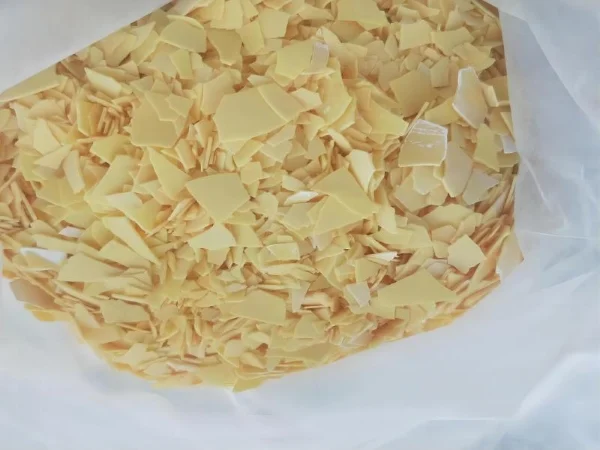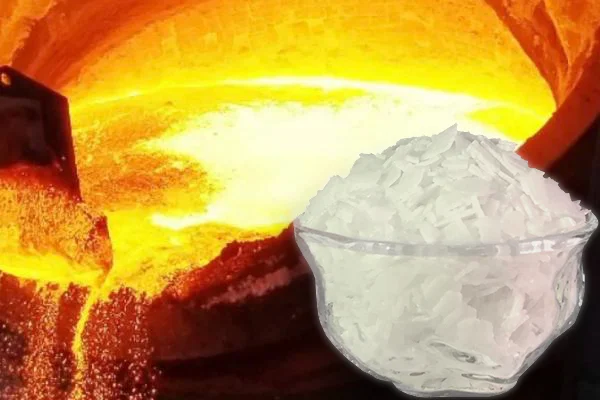
In the field of Mineral processing, flotation is a widely used method for separating valuable minerals from gangue. Sodium sulfide plays a crucial role in this process, mainly being used to adjust the pH value of the pulp, sulfidize, depress, and strip the surface of minerals. Its interactions with Collectors, Frothers, and Regulators are complex and significantly impact the efficiency and selectivity of flotation.
Interactions with Collectors
Influence on Sulfide Mineral Collectors
For commonly used collectors for sulfide minerals such as xanthates and dithiophosphates, when the dosage of Sodium sulfide is appropriate, it can enhance the hydrophobicity of the sulfide mineral surface, enabling collectors to adsorb better on the mineral surface and improving the floatability of minerals. However, when sodium sulfide is in excess, it will form a hydrophilic film on the surface of sulfide minerals, hindering the adsorption of collectors and thus playing an inhibitory role. For instance, in the flotation of copper-sulfur ore, an appropriate amount of sodium sulfide can promote the collection of chalcopyrite by xanthate, while an excessive amount will inhibit the flotation of chalcopyrite.
Influence on Oxide Mineral Collectors
In the flotation of oxide minerals, sodium sulfide can sulfidize the surface of oxide minerals, allowing them to be collected by sulfide mineral collectors. For example, when using fatty acid collectors to float cerussite, sodium sulfide first sulfidizes the surface of cerussite and then interacts with the fatty acid collector, improving the flotation effect of cerussite.
Interactions with Frothers
Sodium sulfide itself has no foaming property, but it can affect the properties of the pulp and the surface state of minerals, thereby influencing the foaming effect of frothers. An appropriate amount of sodium sulfide makes the surface hydrophobicity of minerals suitable, which is conducive to the attachment of bubbles to minerals, improving the aeration effect and foam stability of frothers. However, an excessive amount of sodium sulfide will disperse the fine slime in the pulp, increase the pulp viscosity, cause the foam to become sticky, and affect the stability and fluidity of the foam, which is not conducive to the scraping of the flotation foam and the separation of the concentrate.
Interactions with Other Regulators
Synergistic Effect with pH Regulators
Sodium sulfide hydrolyzes to be alkaline and can synergistically act with other pH regulators such as lime and sodium carbonate to jointly adjust the pH value of the pulp. For example, in the flotation of lead-zinc ore, sodium sulfide and lime are often used in combination to keep the pulp alkaline, inhibit impurity minerals such as pyrite, and improve the flotation selectivity of lead-zinc ore.
Interactions with Depressants
Sodium sulfide has similar inhibitory effects to some depressants such as cyanide and water glass. In some cases, they can be used in combination to enhance the inhibitory effect. For example, in the flotation of copper-lead-zinc polymetallic ore, the combined use of sodium sulfide and cyanide can strengthen the inhibition of sphalerite and pyrite, achieving the effective separation of copper-lead from zinc-sulfur. However, attention should be paid to controlling the dosage and addition sequence; otherwise, excessive inhibition may occur, affecting the recovery rate.
Interactions with Activators
Sodium sulfide has an activation effect on some inhibited minerals and can be used in combination with activators. For example, in the flotation separation of sulfide copper-lead ore, galena inhibited by cyanide can be activated by sodium sulfide and then collected by ethyl thionocarbamate to achieve the separation of copper and lead. At the same time, sodium sulfide may also affect the effect of other activators. For example, an excessive amount of sodium sulfide may consume the active ions in the pulp, reducing the activation effect of activators.
In conclusion, understanding the interactions of sodium sulfide with other reagents in the flotation process is of great significance for optimizing the flotation process, improving the recovery rate and grade of valuable minerals, and reducing the cost of mineral processing. Mineral processing engineers need to carefully adjust the dosage and addition sequence of various reagents according to the specific properties of the ore to achieve the best flotation results.
- Random Content
- Hot content
- Hot review content
- QUALITY MANAGEMENT SYSTEMCERTIFICATE
- Colloidal emulsion explosive
- High-strength, High-precision Shock Tube Detonator
- 99.5% min Ammonium Chloride For Industrial Use
- Citric acid-Food Grade
- Fertilizer magnesium sulfate/magnesium sulfate monohydrate
- Cupric Chloride 98%
- 1Discounted Sodium Cyanide (CAS: 143-33-9) for Mining - High Quality & Competitive Pricing
- 2Sodium Cyanide 98% CAS 143-33-9 gold dressing agent Essential for Mining and Chemical Industries
- 3Sodium Cyanide 98%+ CAS 143-33-9
- 4China's New Regulations on Sodium Cyanide Exports and Guidance for International Buyers
- 5Anhydrous Oxalic acid 99.6% Industrial Grade
- 6Oxalic acid for mining 99.6%
- 7Reagent Grade/Industrial Grade Hydrochloric Acid min.31%
- 1Sodium Cyanide 98% CAS 143-33-9 gold dressing agent Essential for Mining and Chemical Industries
- 2High Quality 99% Purity of Cyanuric chloride ISO 9001:2005 REACH Verified Producer
- 3 High-Quality Sodium Cyanide for Leaching
- 4Powdery emulsion explosive
- 5Industry Grade Electron grade 98% Sulfuric Acid H2SO4 Sulphuric Acid Battery Acid Industrial Sulfuric Acid
- 6Colloidal emulsion explosive
- 7sodium hydrosulfide 70% flakes used Mining Industry











Online message consultation
Add comment: